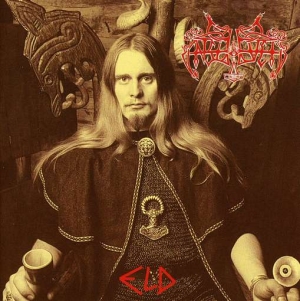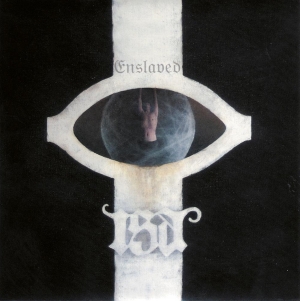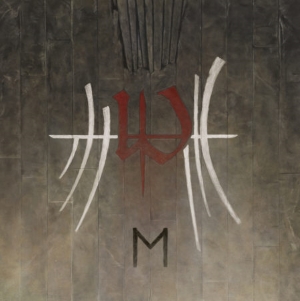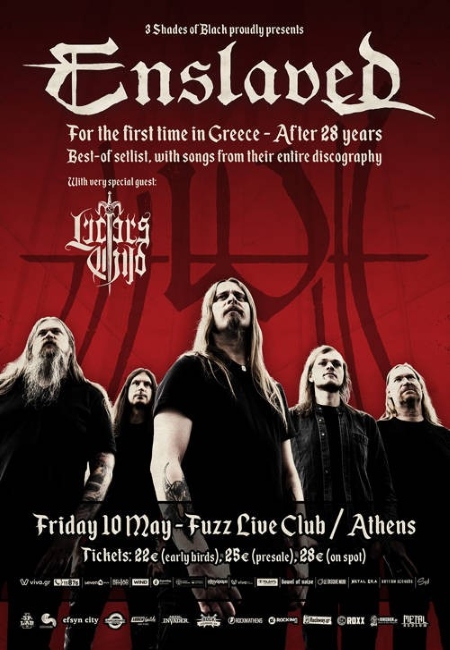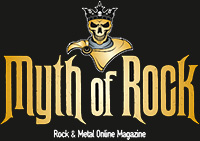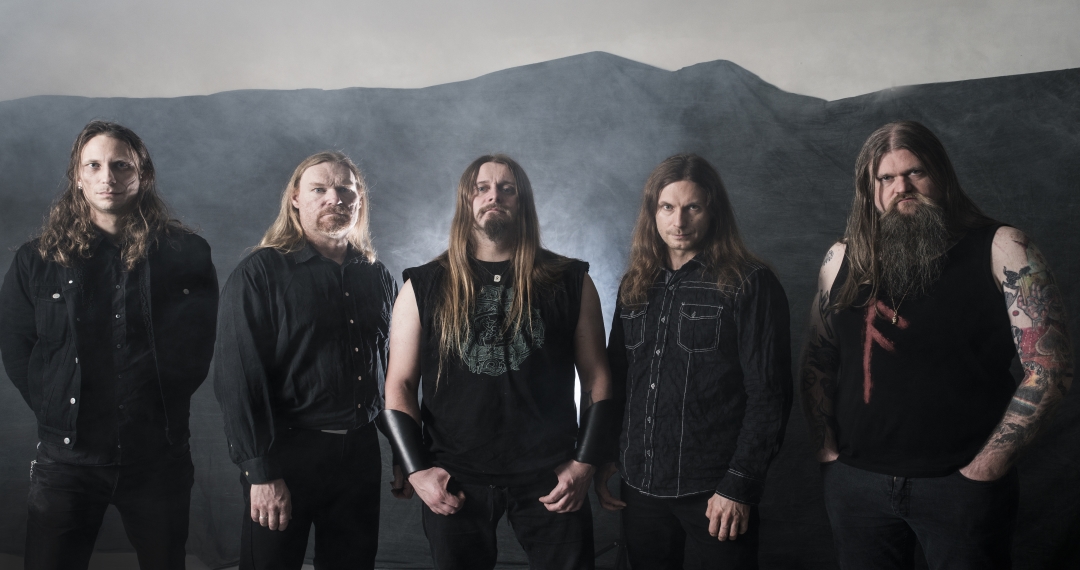Enslaved fall into a remarkable category where only few bands of planet Earth are included, bearing the attributes of longevity, constant musical evolution and impact at the forefront. Let’s call this group L.E.I. (Longevity – Evolution – Impact). Efforts to compare L.E.I. members with non-L.E.I. bands may be blatantly blasphemous and a priori unsuccessful (no more discussions are necessary). However, since the day we will see Enslaved on stage approaches, it would be wise to have a quick look at the history and stepping stones of that spectacular band.
by Alex Nikolaidis
When Ivar and Grutle formed Enslaved back in 1991, at the age of 13 and 17 years old respectively (play close attention: the founding members were a kid and a teenager), no-one could fathom the path they would follow later on. Initially emerged from the fertile soil of the Norwegian black metal, it soon became apparent that Enslaved would not restrict themselves by the traditional boundaries of their home genre, both musically and lyrically. Ivar’s and Grutle’s talent could not bear any kind of label, allowing themselves to float to territories where few bands dare to even approach (however, labels are in fact a way of simplistic reasoning). Over the decades, the terms “experimentation” and “evolution” became synonym for the band’s name, while “stagnation” was something absolutely irrelevant to their creative universe.
Even at their first era, Enslaved deviated from the traditional concept and attitude of most Norwegian bands, refusing to adopt the satanic, misanthropic lyrical content of the genre. Instead, they always had a strong preference –since their teenage years- for their country’s heritage: Norse mythology, Viking’s legacy and spirituality. Their debut, “Vikingligr Veldi”, in February 1994, initially produced by Euronymous’ Deathlike Silence, was rough, sharp and cold as steel, traditionally black but profoundly mature, bearing in mind that the band members were just… juveniles. Indeed, diamonds like “Lifandi liv undir hamri” and “Vetrarnótt” will always haunt us with their relentless riffing patterns.

That was a period of creative orgasm, since “Frost” came out during the same year, by Osmose Productions. Despite the extremely short time interval between the first two albums, “Frost” was much different from its predecessor, being more melodic, folk and epic, exuding an authentic Viking aura. Inspiring, atmospheric parts co-exist harmonically with violent outbursts, creating a never-to-forget magical journey to the North, frozen sea and shorelines. Enslaved showed only a small glimpse of their full potential through “Frost”; the seeds were still growing patiently into their hospitable hatch, waiting for the right time to emerge.
Three years later, “Eld” was more progressive and technical, balancing between the strong black foundations and the grandiose Viking metal. Extensive use of clean vocals and mid-tempo, well-crafted melodies reel the audience in a world of epic heritage, from where no-one wants to escape. The opening track, “793 (Slaget Om Lindisfarne)”, constitute a delicate adventure, a microcosmic album-within-the-album, a multi-layer gem which makes us wish it would last longer, despite its duration of over than 15 minutes.
“Bloodhemn”, released in 1998, had the epic and folk character of “Eld”, though under a more dark, heavy and war-like prism. It was like “Eld” decided to cast aside its imperious garment, leave its hermetic throne and come down to harsh reality, mingling with bloody battles, dirt and Gods’ disputes.
As years pass, Enslaved could not be stagnant. Their fifth album, “Mardraum: Beyond the Within”, built upon the framework of “Eld” and “Bloodhemn”, encompasses death metal elements, especially regarding some vocal lines. Admittedly, “Mardraum” is not as successful as previous releases, since many songs cause a sense of uncertainty. However, it represents the band’s willingness to make something different, being an augury of what was meant to follow.
The turning point occurred next year, when the new Enslaved emerged, revealing the canvas (not to its full extent though) on which they would weave thereafter. “Monumension” dared to go one step further, knocking for the first time the door of immense progressive land. Delving into unexplored depths, being intellectual and simultaneously heavy, bringing forth psychic, Floydian vibrations from another decade, it is highly regarded as the junction where Enslaved changed direction. Complexities, melodies, keyboard parts and clean vocals by the keyboardists would play a crucial role since then.
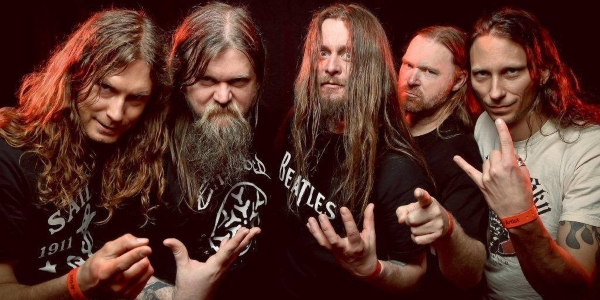
The ideas of “Monumension” would mature further two years later, in “Below the Lights” (the last album via Osmose Productions). A more progressive essence and tendency for experimentation are explicitly evident, without ignorance of the past. Someone could write many pages about this album. Personally, I prefer to draw attention to two songs: “The Crossing”, a complex masterpiece combining effectively a sequence of different parts (I have the impression that its acoustics influenced many bands later on) and “Queen of Night”, where the intro with the flute (let alone the overall structure of the track) refer directly to the prog scene of the 70s.
In “Isa” (2004) and “Ruun” (2006), both under Candlelight, Enslaved continued experimenting in psychedelia, building upon the roots of “Below the Lights”. The band has developed enough self-confidence to do whatever they want, focusing mainly in melodies and the selective and timely use of keys and mellotron (the contribution of Herbrand Larsen was a crucial contribution in this respect), which gave a more retro sound. Prog influences are countless, although the harsh sound of the band is still present.
In 2008 Enslaved released “Vertebrae”, the first record under Nuclear Blast (they remain in this label until today). Even though the album is ranked 10th chronologically at their long discography, inspiration seems to be endless. Enslaved, without restrictions (they never had any actually), play once more with psychedelic patterns, encompassing even jazz elements. The complex songwriting makes the listening experience challenging, since such a creative mixture of black metal and prog and space rock is not something that curious fans come across daily.
“Axioma Ethica Odini” followed in 2010, representing a direction towards a heavier, harsher sound, found in earlier releases (in a sense, it reminds of “Frost”’s frost). It remains prog enough and complex of course; however, the focus this time is not on melodies, keyboard parts or clean singing. Hence, many critics praised the album due to the band’s ability to balance perfectly between music genres that are seemingly irrelevant to each other. Overall, “Axioma Ethica Odini” might be considered as a synopsis of an astounding career so far.
Two years later, “RIITIIR”, one of the most spiritual and introspective Enslaved’s albums (in lyrical terms), expands further the playground upon which black metal mingles with progressive and avant-garde rock. Larsen’s clean vocals and melodic patterns draw you to immense cosmic territories previously undreamed of, while many fans may drift apart in tracks like “Thoughts Like Hammers”, “Roots of the Mountain” or “Storm of Memories”.

“In Times” was released in 2015, being another monumental album, pushing the boundaries of prog experimentations even further (indeed, they still have inspiration on their 13th record!). Enslaved explore philosophically the essence of time, giving Larsen a more prominent role, an option that enables him to drive us to dreamy landscapes. Opuses like “Thurisaz Dreaming” and “One Thousand Years of Rain” were considered classics instantly, while “Daylight” closes the album with a grandiose, epic melody, under which Bathory’s nodding emerges discreetly.
Finally, “E” continues on the pattern of its predecessor, being somehow more melodic and atmospheric and bringing forth even jazz influences (among others); indicatively, note the use of saxophone in “Hiindsiight”. Constant changes in rhythms, atmospheres and vocal patterns create an immensely imaginative mosaic of proportions unreachable by any other band. Once again, Enslaved placed emphasis on clean vocals, bringing at the foreground Håkon Vinje’s contribution (the new keyboardist of the band); that was a crucial parameter in maintaining the prog element in “E”. It is really astounding how fresh, inspiring and authentic that album sounds, even after almost 30 years of active discography.
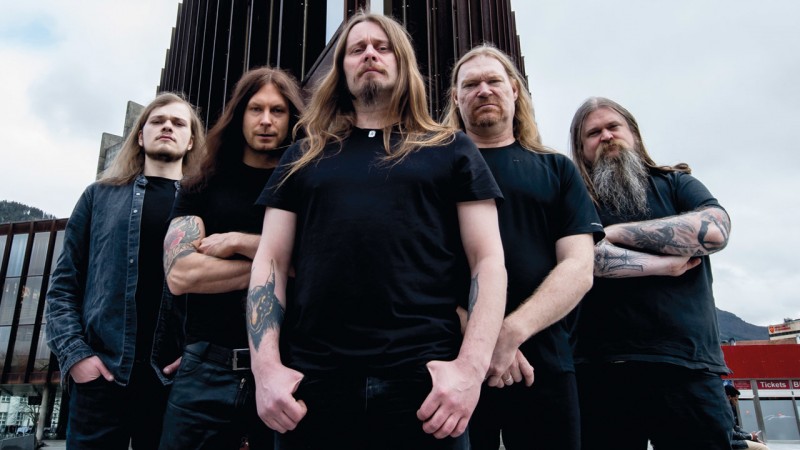
Unluckily, this highly creative band never performed in our country, even though some efforts were made that eventually did not succeed. At last, the Greek audience will have the opportunity to experience Enslaved in Athens, at a show hosted by 3 Shades of Black, at Fuzz Live Music Club on 10 May 2019 and in Thessalonica on 11 May, at Principal Club Theater (hosted by Krisis Productions).
